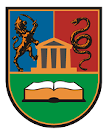Please use this identifier to cite or link to this item:
https://scidar.kg.ac.rs/handle/123456789/22318Full metadata record
| DC Field | Value | Language |
|---|---|---|
| dc.contributor.author | Mitić, Predrag | - |
| dc.contributor.author | Kočović, Vladimir | - |
| dc.contributor.author | Mišić, Milan | - |
| dc.contributor.author | Stefanovic, Miladin | - |
| dc.contributor.author | Djordjevic, Aleksandar | - |
| dc.contributor.author | Pantić, Marko | - |
| dc.contributor.author | Projović, Damir | - |
| dc.contributor.editor | Yang, Jie | - |
| dc.contributor.editor | Cheng, Shi | - |
| dc.date.accessioned | 2025-05-16T09:57:57Z | - |
| dc.date.available | 2025-05-16T09:57:57Z | - |
| dc.date.issued | 2025 | - |
| dc.identifier.issn | 2073-8994 | en_US |
| dc.identifier.uri | https://scidar.kg.ac.rs/handle/123456789/22318 | - |
| dc.description.abstract | The application of CAD/CAM technologies in modern production has revolutionized manufacturing processes, leading to significant improvements in precision, efficiency, and flexibility. These technologies enable the design and manufacturing of complex geometries with high accuracy, reducing errors and material waste. CAD/CAM integration streamlines workflows, enhances productivity, and facilitates rapid prototyping, accelerating the time-to-market for new products. Additionally, it supports customization and scalability in production, allowing for cost-effective small-batch and large-scale manufacturing. Without a 3D model of the product, it is not possible to use the advantages of applying advanced CAD/CAM technologies. Recognizing 3D models from engineering drawings is essential for modern production, especially for outsourcing companies in fluctuating market conditions, where the production process is organized with 2D workshop drawings on paper. This paper proposes a novel methodology for reconstructing 3D models from 2D engineering drawings, specifically those in DXF file format, leveraging a genetic algorithm. A core component of this approach is the representation of the 2D drawing as a symmetric adjacency matrix. This matrix serves as the foundational data structure for the genetic algorithm, enabling the evolutionary process to effectively optimize the 3D reconstruction. The experimental evaluation, conducted on multiple engineering drawing test cases (including both polyhedral and cylindrical geometries), demonstrated consistent convergence of the proposed GA-based method toward topologically valid and geometrically accurate 3D wireframe models. The approach achieved successful reconstruction in all cases, with fitness scores ranging from 1.1 to 112.2 depending on model complexity, and average execution times from 2 to 100 seconds. These results confirm the method’s robustness, scalability, and applicability in real-world CAD environments, while establishing a new direction for topology-driven 3D reconstruction using evolutionary computation. | en_US |
| dc.language.iso | en | en_US |
| dc.publisher | MDPI | en_US |
| dc.relation.ispartof | Symmetry | en_US |
| dc.subject | symmetric adjacency matrices | en_US |
| dc.subject | 3D model reconstruction | en_US |
| dc.subject | genetic algorithm | en_US |
| dc.subject | engineering drawings | en_US |
| dc.subject | DXF file | en_US |
| dc.title | A Novel Approach in 3D Model Reconstruction from Engineering Drawings Based on Symmetric Adjacency Matrices Using DXF Files and Genetic Algorithm | en_US |
| dc.type | article | en_US |
| dc.description.version | Published | en_US |
| dc.identifier.doi | https://doi.org/10.3390/sym17050771 | en_US |
| dc.type.version | PublishedVersion | en_US |
| Appears in Collections: | Faculty of Engineering, Kragujevac | |
Files in This Item:
| File | Description | Size | Format | |
|---|---|---|---|---|
| symmetry-17-00771.pdf | 1.46 MB | Adobe PDF |  View/Open |
Items in SCIDAR are protected by copyright, with all rights reserved, unless otherwise indicated.

